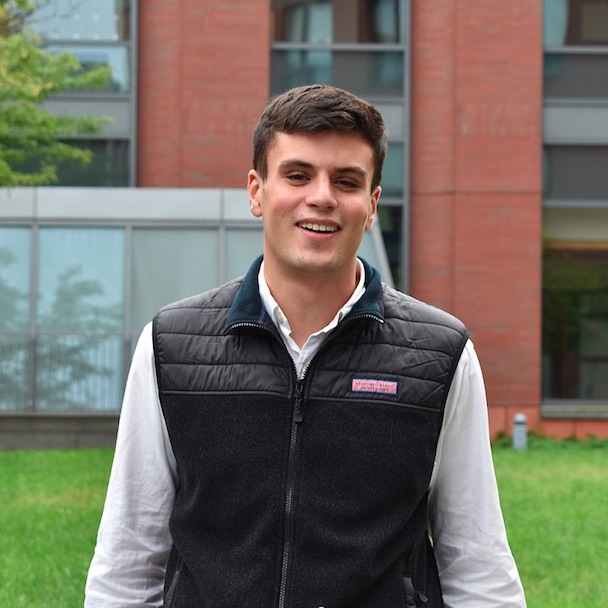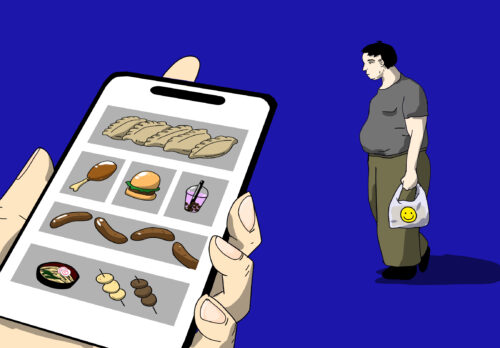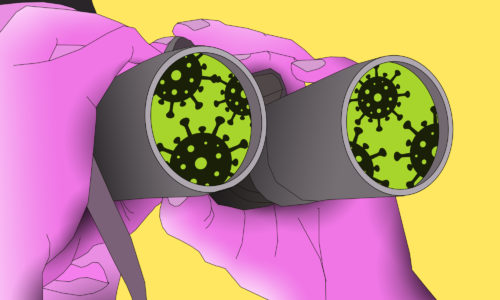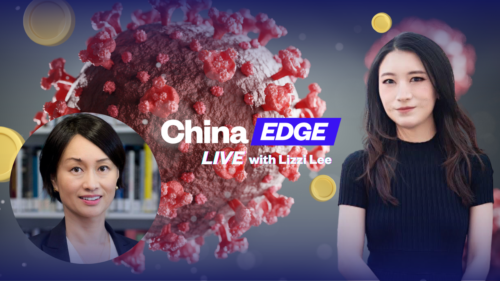When China and America worked together…to build a hospital?
In 1835, an American missionary and a Chinese merchant opened the first permanent Western-style hospital in China, curing thousands of people of various ailments and diseases — and even blindness, if you believe the reports.
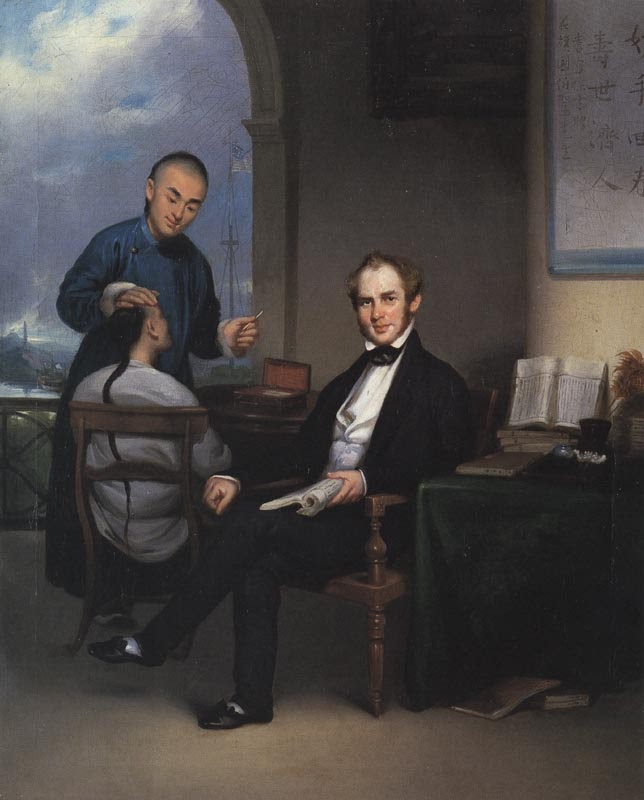
“Did ever a hospital do more good?”
—George B. Stevens, author of The Life, Letters, and Journals of the Rev. and Hon. Peter Parker M.D.

As U.S.-China relations have deteriorated in the last five months, so has what was once an unparalleled healthcare exchange. Since the U.S. withdrew from the World Health Organization (WHO) this summer and Trump has aggressively postured against China, the U.S. is beginning to drive health exchange with China to a point of no return.
In the midst of this fraught moment, is there any example we can look to when the U.S. and China worked through healthcare issues during uneasy times? As it turns out, there is.
This is the story of a magnanimous Chinese merchant, a fire-and-brimstone New England missionary, and their hospital.
In 1830s Guangzhou, hostilities ran high between foreign traders and local citizens. The “Opening of China” was in full swing, and the Qianlong Emperor’s famous words to King George III four decades before — “We possess all things” — still echoed. While Europeans hauled riches and rare Chinese exotica back to the Old World, Guangzhou descended into chaos: As John Pomfret writes in his book The Beautiful Country and the Middle Kingdom, 1,400 tons of opium flooded China through Guangzhou, imperial authorities turned a blind eye to rampant smuggling of foreign goods and petty crimes, and extraterritoriality issues rose after an American allegedly murdered a Chinese woman. In this rather dark moment, two men emerged to do good: Wǔ Bǐngjiàn 伍秉鉴 and Dr. Peter Parker.
Wu, better known as “Howqua” (the romanization of his trading name in Hokkien) to his American friends, was a Fujianese merchant who carved out a massive fortune through trading with Westerners in Guangzhou’s hong system (factory buildings designed for Western traders to live and work), at one point becoming arguably the richest man in the world. Howqua was as clever as he was amicable, doing business with Americans at a time when it was more fashionable to work with the long-established Dutch or the British. By 1831, Americans accounted for 20% of foreign trade in Guangzhou, bought 30% of Guangzhou tea exports, and were responsible for 87% of Guangzhou silk purchases by foreigners. Through the Americans, Howqua got rich, and his affable attitude attracted many friends along the way.
At the same time, on the other side of the world, Dr. Peter Parker completed his bachelor’s degree from Yale University and prepared to begin his vocation as a minister. Coming from a deeply religious Massachusetts family, Parker sought to make an impact in China, stating in his journal that it was his “duty and privilege” to become a foreign missionary, as recorded by Edward Gulick in his book Peter Parker and the Opening of China. With “striking ability and inexhaustible energy,” by 1834, Parker was certified as a practicing physician, and received his assignment to China by the American Board of Commissioners for Foreign Missions.
In the fall of 1834, Parker arrived in Guangzhou, where he was confined to a life in an American hong and a skimpy waterfront, as missionaries were actively prevented from making contact with locals or proselytizing. Initially, Parker had a disdain for the hong system, calling it a “selfish and gain-greedy community,” riddled with opium, political corruption, and other vices. Neither missionary nor medical work came easy in the early days of Parker’s mission — only after a month was Parker able to see his first patient, a 10-year-old Chinese boy. It wasn’t until the following year, after a sojourn in Singapore, that Parker began making a mark.
Through a friend, Parker was introduced to Howqua, who not only gave Parker a place to live, but included a property at the modest price of $500 a year. It became a hospital, and Howqua even later waived the rent. As Parker wrote in a letter to his mother, “The hong merchant, Howqua, as soon as he understood the object [of the hospital], gave the free use of a large house for twenty years for hospital purposes. In this manner a great burden was taken off the shoulders of the little band of missionaries, and a new opening made in the direction of an acquaintance with the Chinese.”
With 200 beds, proper drainage systems, and “other hygienic advantages,” the facility was far greater in quality than what other medical missionaries could even dream of seeing in Guangzhou. By November 1835, Parker began seeing patients.
It was Howqua’s generosity that made the hospital work. And did it work indeed.
The hospital introduced Western medicine and anesthesia by large volumes to China for the first time. Within 17 days of the hospital’s opening, Parker received 240 patients, nearly all of them Chinese. Parker even treated female patients, who at the time were not lawfully permitted to enter hongs for any reason. But Parker broke boundaries (and the law) to treat his patients where they stood, and within three months, he had treated 1,061 patients — remedying diseases and ailments. As an ophthalmologist by specialty, Parker is said to have even cured blindness. In 45 years of operation, the hospital received 750,000 patients. Every patient seen by Parker was treated free of charge.
In one instance, Parker saved the life of a 13-year-old girl named Akae, who had a malignant tumor above her eye so large that Parker thought “she appeared to have two heads.” Parker was able to remove the one-pound tumor through consistent treatment, skillful handiwork, and an act of “divine providence.” His dedication to his patients and kindness not only inspired classical poems, but also helped the hospital live up to its name: The Hospital of Universal Love (普爱医院 pǔ ài yīyuàn).
The hospital temporarily closed during 1840 due to the First Opium War, and Howqua passed away in 1842, but the Hospital of Universal Love would leave a legacy that would outlast its founders. Parker reopened the hospital the same year of Howqua’s death, and it became the site of future medical missions and education as the Canton Boji Hospital (广州博济医院 Guǎngzhōu bó jì yīyuàn). This is where Sun Yat-Sen (孙中山 Sūn Zhōngshān) would later study Western medicine. It still stands today as the Zhongshan Ophthalmic Center (中山眼科中心 Zhōngshān yǎnkē zhōngxīn), named after Sun. As of 2018, the Zhongshan Ophthalmic Center serves more than 1.13 million patients a year, and holds a reputation as “one of the most prestigious ophthalmic institutes in the world.”

The Hospital of Universal Love is just one example of how the U.S. and China have been partners in efforts to improve the health of the world and of each other. In the 21st century, SARS never became a pandemic partly because the U.S. and China worked together to stop it. The U.S.-based health nonprofit PATH worked with the Chinese state-owned Chengdu Institute of Biological Products to develop and distribute a Japanese encephalitis vaccine that has reached millions in need. While it is important to recognize that the WHO is far from perfect and prone to political foibles, it is at least better than the U.S. or China working alone to solve public health problems.
The U.S. and China are not without fault today, and neither was Dr. Parker or Howqua. Howqua traded opium to amass part of his fortune, while Parker referred to his patients as “the heathen of China” and played a role in facilitating the unequal Treaty of Wangxia (望厦条约 wàng shà tiáoyuē). Both men were products of their times, but they managed to reconcile cultural, religious, and linguistic differences to save lives and create medical miracles. Vestiges of the Hospital of Universal Love stand today as a reminder that some differences can be put aside for the sake of human health.
